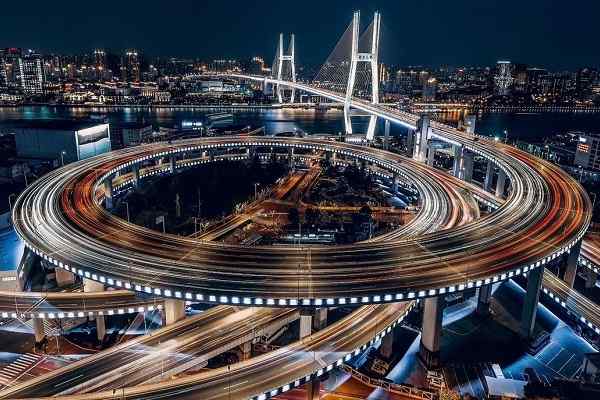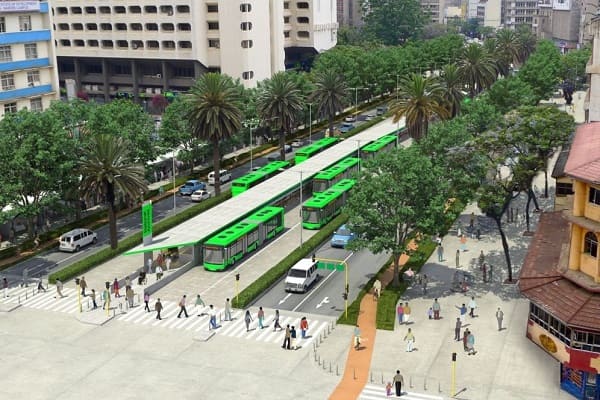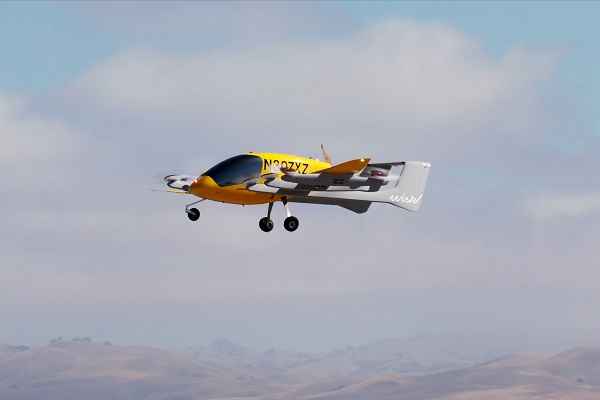 Qatar approves Saudi Rail Link Agreement, Accelerating Gulf Railway Vision 2030
Qatar approves Saudi Rail Link Agreement, Accelerating Gulf Railway Vision 2030 UP Govt plans to introduce Water Metro services in Ayodhya, Varanasi & Prayagraj
UP Govt plans to introduce Water Metro services in Ayodhya, Varanasi & Prayagraj India’s First Urban Ropeway begins Trial Run in Varanasi, Set to carry 1 Lakh passengers daily
India’s First Urban Ropeway begins Trial Run in Varanasi, Set to carry 1 Lakh passengers daily India and Bhutan to Build First-Ever Rail Link: ₹4,033 Cr Project to Boost Regional Connectivity
India and Bhutan to Build First-Ever Rail Link: ₹4,033 Cr Project to Boost Regional Connectivity Patna to launch Eco-Friendly Water Metro; Trial Run soon between Digha and Kangan Ghats
Patna to launch Eco-Friendly Water Metro; Trial Run soon between Digha and Kangan Ghats Air India Group set to launch Flights Operations from Navi Mumbai International Airport
Air India Group set to launch Flights Operations from Navi Mumbai International Airport Chennai to launch 25-Year Mobility Plan with Unified QR Ticketing and One-App Transit System
Chennai to launch 25-Year Mobility Plan with Unified QR Ticketing and One-App Transit System Kochi Metro bags ₹4.4 crore contract to prepare DPR for Mumbai Water Metro Proejct
Kochi Metro bags ₹4.4 crore contract to prepare DPR for Mumbai Water Metro Proejct Navi Mumbai International Airport set for September launch; IndiGo and Akasa Air to lead Operations
Navi Mumbai International Airport set for September launch; IndiGo and Akasa Air to lead Operations Noida International Airport to be Inaugurated on October 30, Commercial Flights in 45 Days
Noida International Airport to be Inaugurated on October 30, Commercial Flights in 45 Days
The Restaurant Theory of Smart Cities

Cities have been sought after, through the ages, by people looking for economic opportunities. For lack of a better description, they can be defined as labour markets. They are the destinations which people make their own, in their quest to earn incomes and wages. Economic activity results from the connections established between people, places, organizations, and markets as they occupy proximate space within city confines. For me, the one word which comes closest to capturing the essence of a city is connections.
What makes markets, including the labour market, prefer one destination over the other depends on multiple factors – both exogenous and endogenous. Cities are adaptive systems, parts of multiple feedback loops, mimicking living organisms in many ways. Let’s understand the dynamics of an adaptive system through a simple example from the world of food. Am sure, we all have, at some time or other, stopped over at food courts on highways for refreshments. What do we find there? The number of restaurants and we have to decide as to which one to go for! Let’s say, there is a particular restaurant named X. And let’s, for the sake of argument, assume that all restaurants serve exactly similar cuisines. Imagine that the first person who comes there on a particular day chooses X. The choice of this person for X over others would be driven, largely, by his own personal preference. Maybe she liked the ambiance, or the signboard, or the reviews on her app. But once this person is in, the next person who comes in, and must decide between restaurants has not only her personal preference to bank upon but also the fact that there is a particular restaurant X that already has someone eating there. It may so happen that her personal preference was for Y, but she decided to go for X overpowered by another, dominant preference for a place which has a greater number of people, in this case X. Throughout the day, many people make similar decisions, and this may well have led X to have got maximum customers on that day. To be fair, there can be many other permutations that lead to other restaurants getting more customers. But am sure you are getting a hang of what I am alluding to.
This system is an adaptive system as, every previous action, or existing circumstance, continuously affects what the next action will be, or how the next circumstance emerges. Not only do people’s preferences influence restaurant selection, but restaurant selections also influence people’s preferences. A loop builds, in this case causing a positive outcome, wherein each event in the loop positively influences the probability of the other event.
There can also be negative loops. An example of a negative loop is how neighborhoods wither away. For example, if there is an old neighborhood (again labeled X) and has, say 1000 families residing therein. Let’s say, 10 percent of families have a personal preference to continue staying in the neighborhood only till the time 90 percent of these original families continue staying there. For another 10 percent, this threshold is 85 percent and for another 10 percent, 80 percent and so on. Now, imagine that due to some reason, say a pandemic, a block of 120 families leaves the neighborhood. This would trigger a chain reaction. When 120 families leave, 880 remain. Consequently, as the number goes below 900, those 10 percent, i.e., 100 families with the 90 percent threshold also leave. This triggers the next lot of 10 percent with the 80 percent threshold to leave, thereby continuously depleting the population of the neighborhood. As we see again, people’s decisions cause a change in neighborhood organization which in turn affects people’s decisions, in this case leading to a negative outcome wherein more the people leave, more people decide to leave thereby causing a sharp decrease in the neighborhood’s population.
Similar effects play out in cities, on a hugely complex and wide scale. Previous decisions of people about destinations to live, work and play in turn affect the decisions of others regarding destinations to take up work, places to live and so on. And these loops constantly feedback on each other. The world of cities is not very different from the world of the highway food court. Some restaurants do well, while others shut down. Those who do better than others have something or the other going for them. Cities, like these restaurants or the neighborhoods, are part of a competitive system of choices, embedded in multiple, dynamic, and complex feedback loops through which their evolution takes place.
So how does this help us understand Smart cities? Well! Restaurant X will be considered smart if it continues to thrive over the long term. However, in a competitive world, there is no perennial guarantee of success. It must reinvent itself many times over to remain successful over time. It will have bad days, but it would need to recraft its strategy to keep bouncing back. After a while, people may get bored of its decor, or its competitors would improve themselves or steal some of its recipes. In such situations, X must be innovative by constantly redefining the experience of its customers in newer and better ways. X must remain connected to its customers, value their feedback and keep co-creating its restaurant experience based on it. And besides, ‘restaurant’ isn’t only about food anymore, it’s the experience dude!
So, it is in cities. Cities, to be thought of as smart, must keep reinventing themselves. Many times, over. Through each new circumstance. They need to keep navigating the unpredictable world of competition, consistently. Adaptability (ability to mould their functioning in response to emergent situations), resilience (ability to bounce back from bad times), innovation (ability to push the frontier with new methods of doing things), sustainability (ability to perform consistently over the long term), and connectedness (ability to build connections, partnerships, value feedback and co-create) are virtues which characterize highway restaurants and smart cities! And yes, just like restaurants, cities are also experiences. Well! What about technology? It’s just the plumbing! And now, I head to my next meal.
(This article first appeared on the NIUA website)







